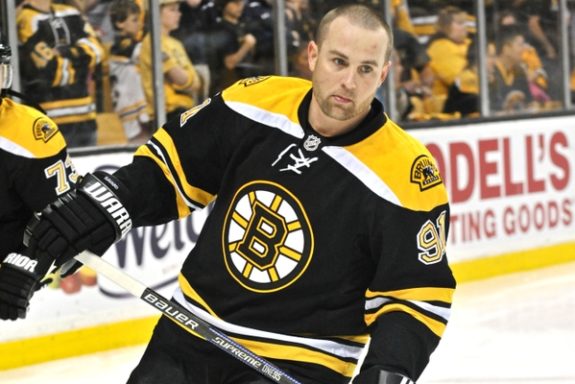On June 21, 2018, NHL Commissioner Gary Bettman announced the Team Payroll Range for the 2018-19 season. The upper limit, or salary cap, was set at $79.5 million while the lower limit, or salary floor, was fixed at $58.8 million.
The salary cap attracts most of the attention because salary restrictions imposed by the Collective Bargaining Agreement (CBA) affect NHL general managers on a daily basis. The financial decisions they are required to make regarding contract signings, trades, free agent acquisitions, and player movements are always affected by the salary cap.
What seems to garner little attention is the salary floor and its effect on many small or less wealthy market teams. The 2005-06 season salary floor was $21.5 million, which means the minimum team salary has increased $37.3 million, or 173.5 percent since the original CBA was signed.
How are franchises that are struggling financially coping with the annual increase in minimum team salaries? Some general managers are choosing to use a ‘loophole’ in the CBA to conform to the minimum salary floor. The ethics of this practice is debatable as you will see.
The Losses
According to Forbes Magazine’s 2016-17 annual NHL “Most Valuable Teams” issue, eight franchises had negative operating income two seasons ago:
Team Operating Income Losses (millions)
Colorado Avalanche 400.0
Arizona Coyotes 19.0
Buffalo Sabres 13.0
Florida Panthers 11.0
Tampa Bay Lightning 8.6
New York Islanders 8.6
Columbus Blue Jackets 5.3
Anaheim Ducks 2.6
The ‘Loophole’
In some cases, these losses could be eliminated if teams that don’t have strong revenue numbers were not forced to spend money they don’t have on player salaries. Here’s how some general managers have managed to take advantage of a ‘loophole’ in the CBA to mitigate franchise losses.
Small or less wealthy market teams may consider taking injured or non-playing players’ salaries onto their payroll if they are struggling to fulfill the CBA-imposed cap floor. An excellent example of this strategy was the trade between the Boston Bruins and the Florida Panthers involving Marc Savard. He was traded July 1, 2015, from the Bruins with Reilly Smith to the Panthers for Jimmy Hayes.
Savard had not played a single game since the 2010-11 season when he only played 25 regular season games. His career ended that year due to a severe concussion that he did not recover from. He was placed on the Bruins Long-Term Injury Reserve (LTIR) list and remained there until his trade to the Panthers.
Florida found Savard’s contract attractive because it added $4.0 million to their cap to help them reach the minimum while only costing them $575,000 in real salary each year. The transaction benefited both sides because the Bruins unlocked $4.0 million of cap space without having to trade roster players.

Another example is the trade between the Philadelphia Flyers and Arizona Coyotes. On June 27, 2015, the Flyers traded Chris Pronger and Nicklas Grossmann to the Coyotes for Sam Gagner and a fourth-round pick in the 2016 NHL draft (Otto Koivula).
The reason for the deal was similar to the Florida / Boston trade. The Coyotes needed to add $1.5 million of salary to help them reach the salary floor. Pronger’s contract, with two years remaining, included a $4.94 million annual cap hit worth $575,000 in real money in each of the next two seasons. The Flyers freed up close to $10 million in cap space over the last two years of Pronger’s contract.

Ethics vs. Necessity
As for the ethics of this strategy, we have to consider the spirit of the CBA and what it is trying to accomplish. The goals of the agreement are parity and competitive balance, revenue sharing, and long-term sustainability of the league. The minimum salary floor was agreed to because the NHL Players Association (NHLPA) wanted to protect player incomes, while the league was looking for parity. The minimum salary floor continues to increase and puts increased pressure on budgets for small market clubs.
According to Ken Campbell of The Hockey News, this is “…far more money than their budgets can justify and far more than they’d ever spend if they were left to their own devices.” He suggests that “You have teams that are devoting more energy to finding their way around the salary cap than they are trying to make their teams better. Let’s face it, when the league and the NHL Players’ Association agreed to the cap 10 years ago, it didn’t do it so teams like the Coyotes could pull off cockamamie deals just to get up to the minimum-spending threshold.”
Are NHL general managers violating the spirit of the CBA? Many hockey executives would agree that it is not a question of ethical practice, it is more an issue of necessity for less wealthy teams to comply with the minimum salary floor.
League officials don’t appear to be overly concerned. In 2016, a full year after the Savard and Pronger trades, NHL deputy commissioner Bill Daly was asked to comment on the minimum salary trading practices and said:
I would say that it’s a matter that we monitor, like all other areas of the CBA (collective bargaining agreement), and if we believe it starts to be abused in a way that is inconsistent with how the system is designed to work, at that point, we would try to correct it in collective bargaining with the union. I would say we aren’t at that point on this issue — we do not view it as the loophole that some describe it as.
The NHL could propose new rules to restrict this type of trading strategy in the next CBA. However, the small market owners are the stakeholders that are affected most by the minimum salary floor and would likely oppose new rules against this practice. The NHLPA might support new regulations, like a restriction on trading for players on LTIR, as these transactions ‘artificially’ inflate team salary cap levels. This issue will likely be debated between the owners and the NHLPA when the current CBA expires Sept. 15, 2022.